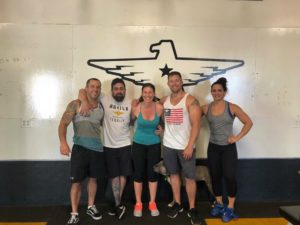Box Squat 3-3-3-3-3-3-3
3 Rounds:
Max Reps DB Floor Press*
Max Reps Box Jump Waist High
Rest while your partner goes
*Use DB's that equal 30% of your body weight in each hand, so if you weigh 2 bills, use 60#ers. Have a partner hand you the DB's and spot you to aviod unnecessary dental work.
Before Running Skills and Drills (Coach, my back hurts)

After 90 Miuntes Running Skills and Drills (no back pain)

Adam approached me in the gym last week, telling me that he hasn't been able to run more than 800m without his lower back tightening up on him and that he thought it may be time for some coaching on running form/technique. Boy was he right.
Look at the pictures in both sequences. The first shot in each sequence is the first frame from the camera where Adam's foot is contacting the ground. The middle picture of each sequence is half way between landing and lifting, or the position known as support, and the last frame is just as the foot is lifted from the ground.
In the before sequence, Adam looks like your average Joe out at McKinely Park beating his body body against the ground with labored footsteps. This is what most of you look like when you run. Don't believe me, let's bust out the camera sometime.
After 90 minutes of skills and drills, in the bottom sequence Adam looks like he actually knows what he's doing here. It doesn't take a running expert to see that there is a distinct difference in position here and that the bottom sequence looks much better.
Rather than going into an explanation of Pose running and why you should learn to run correctly, I want to open it up to you all and see if you can tell me why Adam's low back was hurt from his previous running form, and why it didn't hurt even after 90 minutes of practicing his new form.
After all the drills and practice, Adam said to me, "It feels like I am jumping." Well, running… at least proper running is in fact a continuous series of small jumps from one foot to the other.
What problems can you spot in the top picutre sequence? What is better in the bottom sequence? What things could improve even further with the newly learned technique? Anyone besides Broski even know the basic principals of Pose running?





